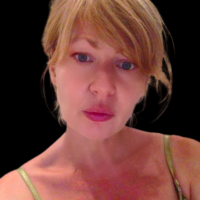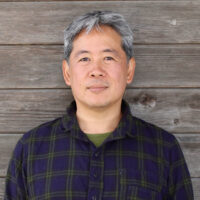
Faculty Create Projects Seed Grant
The first two-year Creative Project Seed Grants are awarded to five faculty members by the Office of the Vice President for the Arts
The new grant was developed for faculty members with an active creative practice that is connected to their university teaching and research.
An inaugural cohort of five faculty members from the School of Humanities and Sciences has been awarded two-year Faculty Creative Project Seed Grants to fund art projects that will significantly impact the campus and beyond. Creative research and productions during the 2023-25 grant period, along with anticipated public presentations, allow the community to celebrate faculty creativity outside their classrooms and as leading artists in their fields.
The Office of the Vice President for the Arts (OVPA) awarded the grants, open to all Academic Council members of any rank and senior lecturers, after a peer review process involving OVPA staff and faculty from multiple departments. The outcomes of the projects that draw from over a dozen areas of study include a cyberfeminist musical performance with soft robotics; a visual arts exorcism of racist history; an exploration of silkpunk aesthetics using computer technology and ritual textiles; an observational documentary examining climate change’s effects on California’s environmental, cultural, and psychological landscapes; and a post-apocalyptic musical starring the lyre player Orpheus from Greek mythology.
“These grants support the remarkable creative work and art practice of our faculty that takes place adjacent to their academic responsibilities,” said Deborah Cullinan, vice president for the arts. “The arts-led innovation of these five projects can change the way the campus community thinks about contemporary issues of the day.”
Here are the Faculty Creative Project Seed Grant recipients and descriptions of their projects:

Patricia Alessandrini, Assistant Professor of Music, Department of Music
Sonic Cyberfeminisms
Patricia Alessandrini’s project is a theatrical, intermedial “duodrama” for the coloratura virtuosi Marisol Montalvo and Donatienne Michel-Dansac and an ensemble of ten musicians based on a libretto by author Alexandra Kleeman. This work will use “soft” robotics systems with both musical and visual interest, based on Alessandrini’s previous work on the Piano Machine, Harp Fingers, Orpheus Machines, and other physical computing systems. These interactive soft robotics systems will be developed in close collaboration with Montalvo, Michel-Dansac, and Kleeman, keeping with the feminist-futurist theme of an interplanetary dialogue between two women, necessarily mediated by technology. These ideas are a continuation of Parlour Sounds (2017), also for soprano and ten musicians, in which the household labor of a woman in the 1960s was transformed into a musical performance by creating interactive instruments from vintage housekeeping appliances. It will thus create a pair of works to be performed separately or together, each with a duration of ca. 40 minutes. These works showing women transgressively repurposing the technology in these lived spaces take place in the past and future, respectively, in a living room on the one hand and a space station on the other. While seemingly a somewhat playful subject, the issue at the core of this second theatrical work is how future technology – including robotics – might be imagined from a marginalized, specifically female perspective. Both are informed by feminist and cyberfeminist theory from Donna Haraway, bell hooks, Audre Lorde, Judy Wacjman, and others. Photo credit: Courtesy of Patricia Alessandrini

Terry Berlier, Associate Professor of Art, Department of Art and Art History
Tonic Immobility
Terry Berlier’s project reimagines the Swiss-American naturalist Louis Agassiz as an inverted shark being tagged through tonic immobility. By taming Agassiz, as he once fell from the quad in the 1906 earthquake with his “head in the sand,” Berlier wants to re-center queer, trans, and decolonial ways of healing to bring to the surface new ways to connect through interdependence. She will create a new series of sculptures, installations, and performances that traverse the intersections of queerness, ecology, memory, monuments, and archives based on this history. Tonic Immobility uses this object/statue as a starting point to perform an exorcism to remove its racist history. Drawing from scholars Sara Ahmed, Joan Roughgarden, Rachel Carson, Karen Barad, José Esteban Muñoz, and Laura Jones, the university archaeologist to decolonize and conjure new forms of place-making. Photo credit: Courtesy of Terry Berlier

Hideo Mabuchi, Professor of Applied Physics, Physics Department
Silkpunk Memory Dōgu
Silkpunk is science fiction that reregisters what we presume technology can do across the diversity of magical fantasies global humanity once had. Silkpunk imagines powerful and effective tools peculiar to indigenous cultures and, in so doing, helps us feel the contingency and obtrusion of our actual technological regime. Hideo Mabuchi’s project asks: Must silkpunk be fictional, and can nonfiction silkpunk still be art? His aim will be to silkpunk computer technology by creating resistive digital memory (RRAM) devices (dōgu) based on the memristor effect in natural indigo, which takes the form of traditional East Asian textiles and is fashioned primarily via corresponding craft processes. In Japanese, dōgu signifies tools meant for delimited use within traditional practices such as tea ceremony, suggesting that RRAM textile dōgu could be understood as implements for rituals of memory. Silkpunk Memory Dōgu will encompass historical research on Japanese Korean cultural interactions and harms enacted by Japan upon Korean people to inform the development of testaments or speculative historical fictions suitable for implanting in East-Asian-silkpunk memory ritual textiles. He will develop prototypes that realize the vision of silkpunk. Photo credit: Courtesy of Hideo Mabuchi

Jamie Meltzer, Professor of Art and Art History, Department of Art and Art History
Shifted Landscapes
Shifted Landscapes is an observational documentary examining climate change’s pervasive effects on California’s environmental, cultural, and psychological landscapes. Jamie Meltzer’s film will explore the insidious ways that the state’s fragile ecosystems are currently being affected by climate change and how these changes impact the lives of communities within the state. Photo credit: Chela Shanti Richheimer

Michael Rau, Assistant Professor, Department of Theater and Performance Studies
Orchestra Orpheus Opus Onus
Orchestra Orpheus Opus Onus is a new music-theater piece written by Kate Soper and directed by Michael Rau. The piece combines orchestral music, solo voice, theatrical spoken storytelling, mixed media, and tape. Set in a post-apocalyptic future, Orpheus sifts through the past, confounded by music’s descent into orchestral memes, trying not to think about Eurydice. Rau’s project will generate an original script, a new musical score, preliminary stagings, and rough scenic, lighting, and costume designs. The piece will be workshopped in New York City and at Stanford, with an eventual premiere in 2025. Photo credit: Courtesy of Michael Rau
